Skip-level readouts can feel like a trap.
Too much detail to cover. Too little time to prepare. An audience that’s already skeptical.
The expectation: a crisp story that shows depth and solutions — without spending days in slide hell.
That’s where speed becomes the real skill. Not just efficiency, but a signal of confidence, mastery, and focus. Skip-level leaders want current, clear information — and they want it now.
For product managers, getting good at this does more than smooth over updates. It builds trust with leadership, strengthens your manager, and accelerates your career.
The Pressure Moment
You’re running a high-visibility initiative. New challenges land daily. You shield your leaders from most of the noise.
Then you hear about your peers getting skip-level recognition: “Big customer Acme is planning to use your latest feature,” says the big boss. Recognition feels good — but shouldn’t you be telling that story yourself?
The last time you tried, the preparation nearly derailed your feature work. How can you afford that productivity hit again?
Your boss nudges: “Others do this well already.” The pressure is on.
The Trap Product Managers Fall Into
Overbuilding a deck full of detail won’t work. Spending hours polishing slides instead of shaping an executive message pulls you away from your best work.
You’re stuck between:
Producing something too slow, complex, and low-value
Leaning on your boss to package material they shouldn’t have to
Delivering a fast but disjointed story that raises doubts about your competence
If you can’t overprepare, rely on your boss, or cut corners, what’s left?
Speed as Strategy
Executives don’t need everything. They need the right things — fast.
The way through is a repeatable 3-slide structure:
Context / Snapshot
Reasoned Response
Next Steps & Asks
This scaffold forces clarity. It’s just enough to help leadership decide, and simple enough to prepare without derailing your real work.
3 Slides in 60 Minutes
Think of skip-levels like any other audience. Engineering wants requirements. Sales wants enablement. Executives want growth, risk, and alignment.
The difference: they don’t see the daily detail. Your job is to roll up what you’re already managing into three slides.
Done right, you can pause once a day, capture what matters, and always be one hour away from exec-ready.
Slide 1: Context
Keep a living deck for your initiative. It evolves through discovery, planning, development, and conclusion. One summary slide becomes your snapshot: where we are, what’s at stake, why it matters for growth.
Slide 2: Reasoned Response
Executives care about growth above all. Risk and alignment are just lenses on growth.
Your reasoned response breaks down into three parts:
Root causes: what’s creating risk or misalignment
Solutions underway: what you’re already doing
Impact if unresolved: what’s on the line
Not every risk belongs here. Just the ones that matter for growth. Listening carefully to your skip-level’s own words about objectives gives you the filter.
Slide 3: Next Steps & Asks
This is where you invite leadership to help. Think of their “magic wand” — small but powerful moves they can make:
Approve a reasonable risk
Sponsor an experiment
Align peers across functions
Adjust priorities to seize growth
Your preparation shows ownership. Your asks show respect for their leverage.
Iteration to Sharpen Your Message
Once your three slides are drafted, the real work is compressing and refining. The best skip-level readouts come from a few disciplined passes, each sharpening the message.
In practice:
Start with the scaffold: context, response, next steps
Stress-test with real questions: apply tough executive asks and see if the answers hold
Add complexity: layer in shifting ground (customer pushback, strategy pivots, new launches) without losing focus
Reconcile confusion: align multiple perspectives — IT, finance, services, engineering — into one story
This stepwise compression produces a concise, confident narrative. And here’s the key: your manager shouldn’t have to rescue you. The strongest skip-level readouts are when the boss does very little and you deliver near-final material directly.
Here's how 60 minutes really breaks down in practice:
Takeaways for Product Managers
Overpreparing delays critical information and hurts your initiative. Underpreparing raises doubts.
Instead, build a system:
A living document that evolves daily
A 3-slide scaffold that channels what matters
A habit of framing through growth, risk, and alignment
Skip-levels aren’t about surviving a meeting. They’re about building trust and unlocking help.
Final Thoughts
The real value of skip-level readouts is information flow — up, down, and across the organization.
Your skip-level needs your readout not just for themselves, but to update their leaders. A crisp three-slide story makes it easy for them to:
Highlight growth opportunities
Demonstrate responses to risks and misalignments
Share clear next steps
Done well and done fast, skip-level readouts don’t just keep leadership informed. They make you and your manager look strong — and they accelerate your product’s momentum.
Looking for more practical tips to improve your product management skills?
New Learning Path How to develop your strategy skills and exercise strategy in side projects (paid subscribers only)
Become a paid subscriber and get more weekly tips. Last week’s article: Can a PM do Strategy as a Side Project?
Premium Product Manager Resources (paid only) 3 learning paths, 6 product management templates and 7 quick starts. New items monthly!
TLDR Product listed Product Management IRL articles recently! This biweekly email provides a consolidated list of recent product management articles.
Connect with Amy on LinkedIn, Threads, Instagram, and Bluesky for product management insights daily.


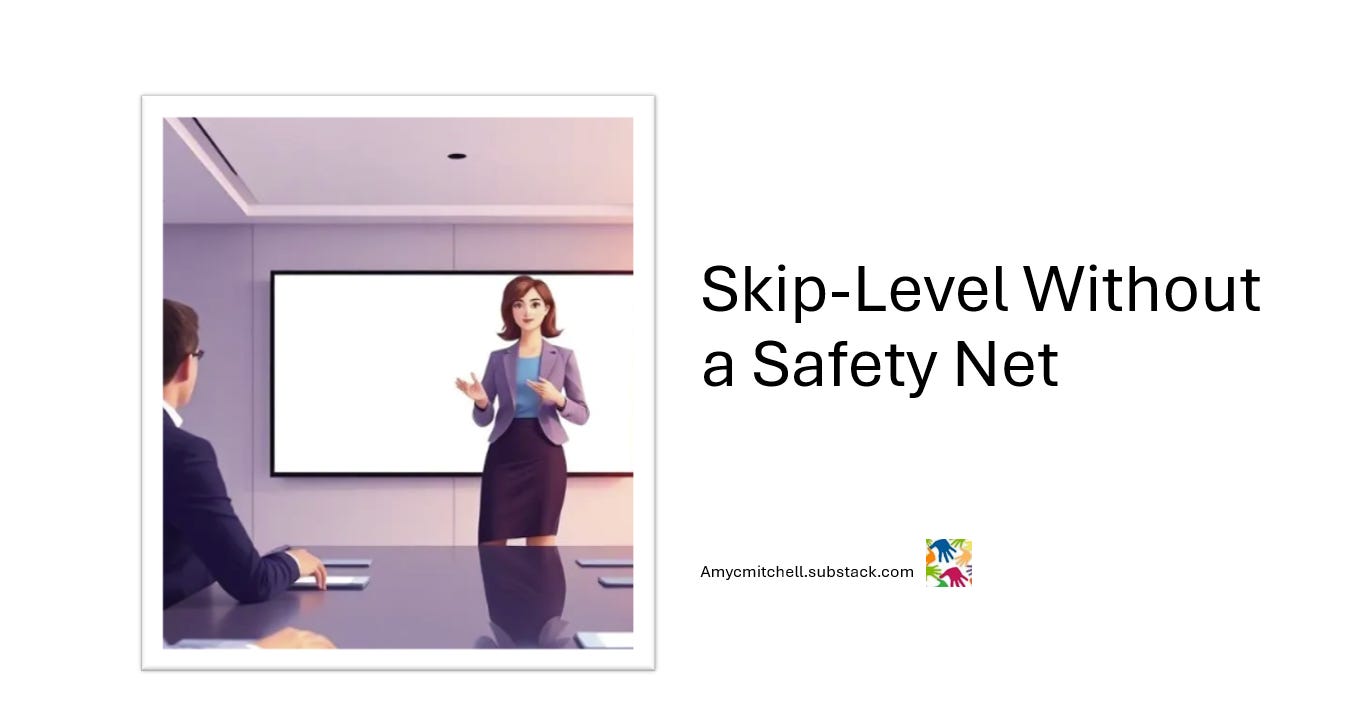
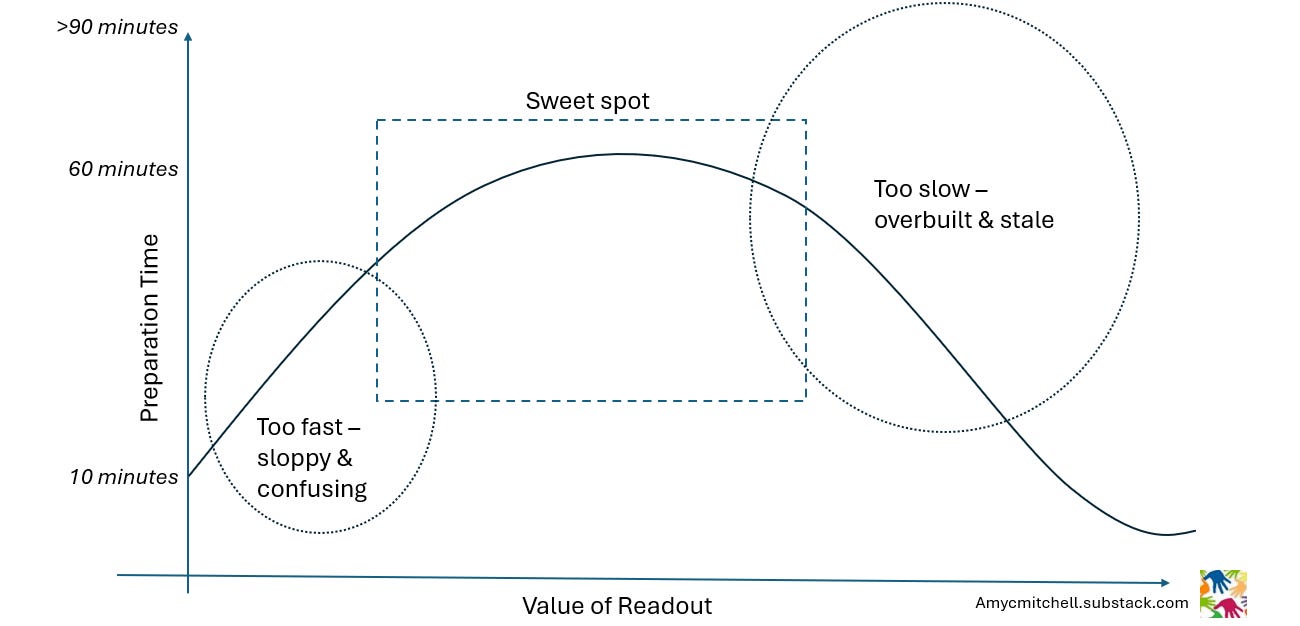
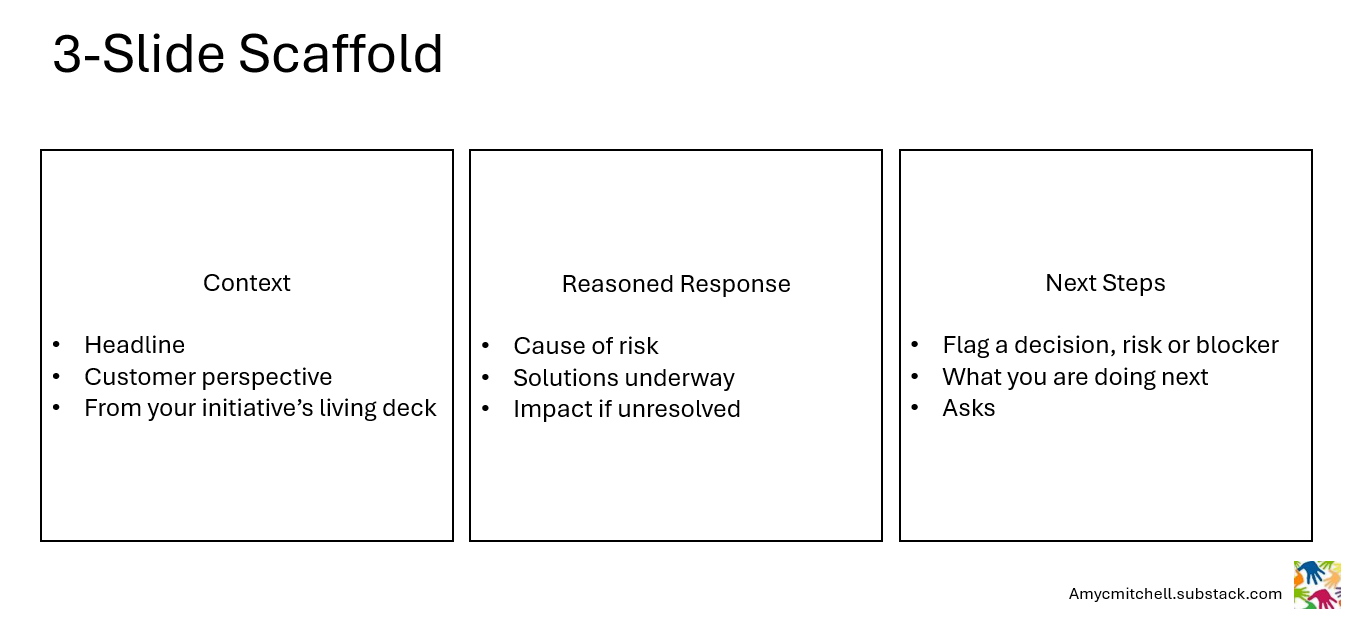
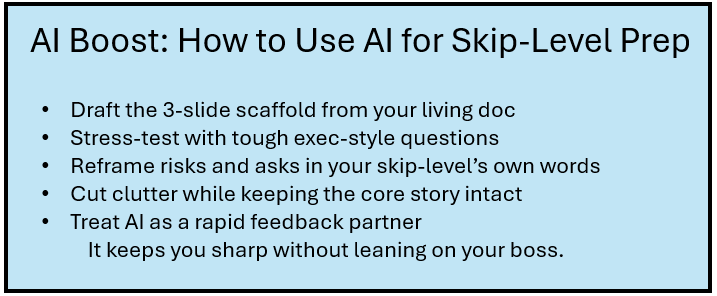
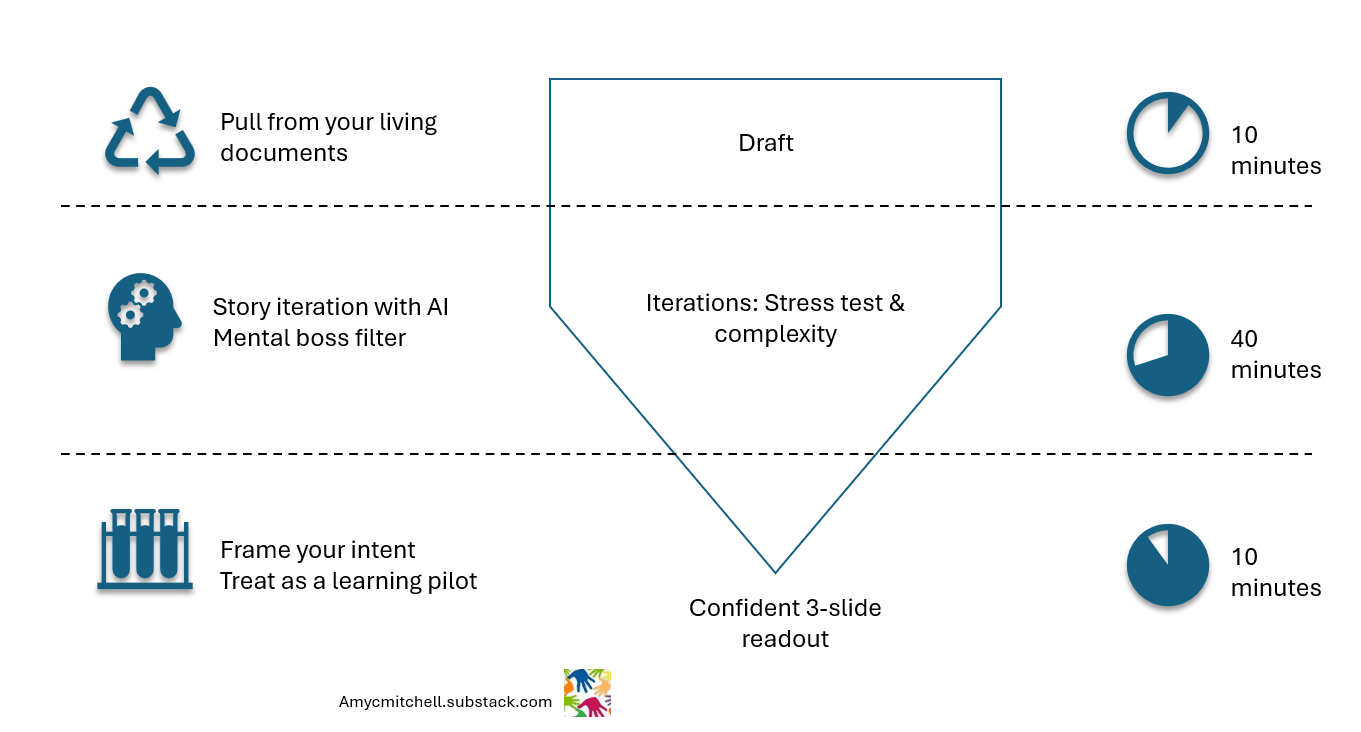
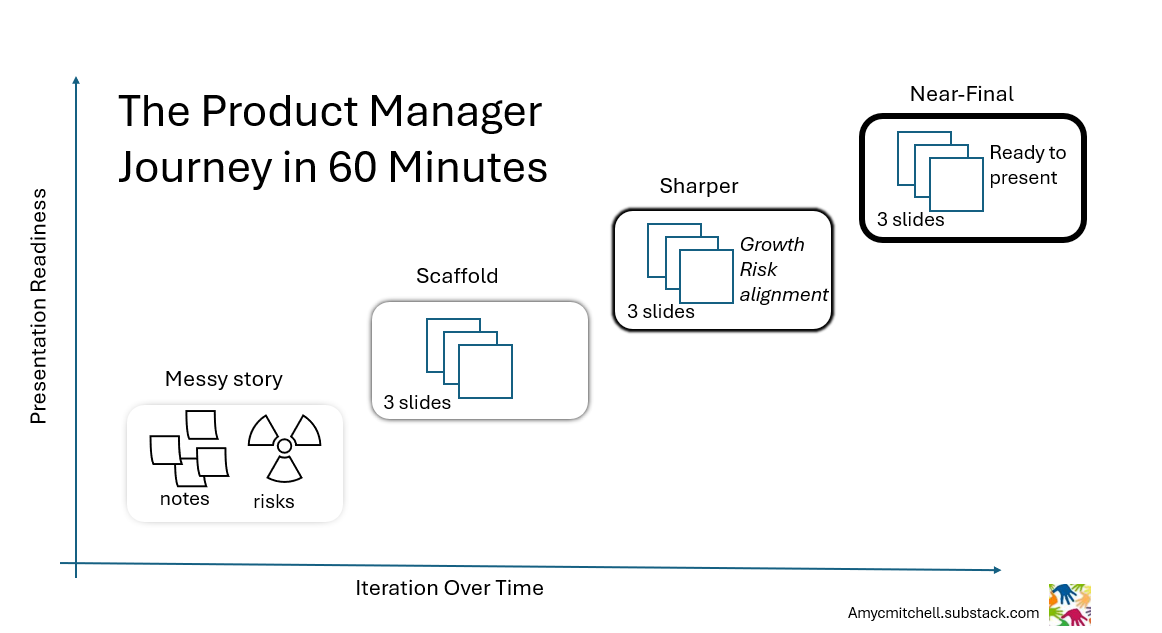
Love love love this. It's helpful and practical!